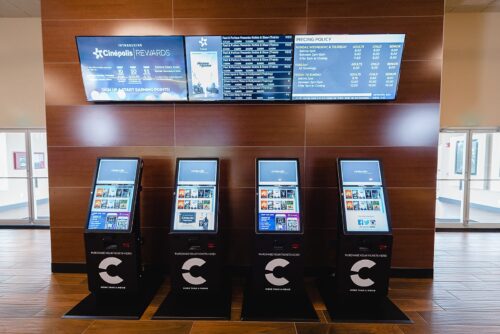Self-service kiosks are an increasingly popular way for businesses to provide a convenient, efficient experience for their customers. From checking in for a flight or picking up a rental car to accessing medical records at healthcare facilities, kiosks offer a seamless solution for streamlining operations. However, simply deploying kiosks is not enough. To fully maximize their potential, businesses must follow kiosk best practices that encourage user adoption and satisfaction.
Here are four proven strategies to increase the use of your kiosks and ensure they deliver the best results for your business:
1. Place Kiosks in High Traffic Locations
One of the most important kiosk best practices is strategic placement. To maximize usage, kiosks should be placed in high-traffic areas where guests cannot miss them. Visibility is key to making customers aware of the self-service option and encouraging them to take advantage of it.
After thousands of successful kiosk deployments, we suggest that the best way to gain user adoption is to position the kiosks front and center so users cannot miss or avoid them.

Successful kiosk deployments often position kiosks front and center. For example:
- Amusement parks and aquariums place ticketing kiosks in parking garages or just outside entrances, ensuring all guests see them before entering.
- Healthcare facilities place kiosks near reception desks to encourage patients and visitors to use them for check-ins.
The goal is to make kiosks accessible and convenient. If kiosks are located in areas that are hard to find or out of the way, their usage rate will drop, defeating the purpose of the deployment. Strategic placement ensures your kiosks are utilized to their full potential, delivering maximum ROI.
2. Greeters
Another effective way is using greeters to encourage and assist customers in using the kiosks. When a self-service kiosk is introduced, some guests may feel apprehensive about unfamiliar technology. Greeters bridge that gap by providing guidance and support, making the process easier for first-time users.
For instance:
- A greeter might say, “Let me help you check in on the kiosk,” while pointing toward it. This vocal and physical cue reassures guests and directs them to the kiosk.
- Redeploying reception or box office staff as greeters helps businesses streamline operations while still providing personal interaction.
By making guests feel comfortable and confident, greeters can significantly increase the adoption of self-service kiosks and create a better overall experience.
3. Signage
Signage is frequently used to help trigger self-service kiosk usage. Overhead signage lets people know as they’re approaching the vicinity that there are self-service kiosks and can be used to drive traffic to the kiosks.
A simple floor sign saying “try our new self-order kiosks” can help drive users to the technology. Overhead signage and signage around the kiosks should indicate what purpose the kiosks serve—for example, are they for ticketing, check-in, food and beverage orders, etc.
In facilities that have deployed kiosks for various functions, graphics or signage on the kiosk itself can help users understand the purpose of the kiosks. Healthcare kiosks often have a sign on the top of the kiosk indicating “Check-in”. Additional signage near the kiosk or as the screen saver with the phrase “Just touch the screen to begin” will prompt some customers to take the plunge.

4. Downsize or Remove the Reception Counter
One of the boldest yet most impactful kiosk best practices is downsizing or removing traditional reception or check-in counters. This creates a physical cue for guests, signaling that the kiosks are the primary point of service.
Data shows that kiosks allow for faster transactions compared to traditional human interactions. By encouraging customers to use kiosks, businesses can reduce wait times, improve efficiency, and free up staff to provide support where needed.
For instance, some businesses reassign receptionists to act as greeters who assist customers at kiosks. This hybrid approach maintains customer service quality while enhancing the self-service experience.
The Importance of Kiosk Best Practices
Self-service kiosks represent a growing trend in many industries, helping businesses enhance user experiences, streamline operations, and improve ROI. However, to unlock their full potential, it’s essential to follow kiosk best practices like strategic placement, engaging signage, and proactive customer support through greeters.
By implementing these strategies, you can:
- Increase kiosk adoption rates.
- Deliver a faster and more convenient user experience.
- Improve operational efficiency while maintaining excellent customer service.
ALSO READ: 5 Common Mistakes to Avoid When Deploying Kiosks
If you’re ready to explore how self-service kiosks can transform your business, contact our team today. Let us help you deploy kiosks effectively and ensure they deliver maximum results.


